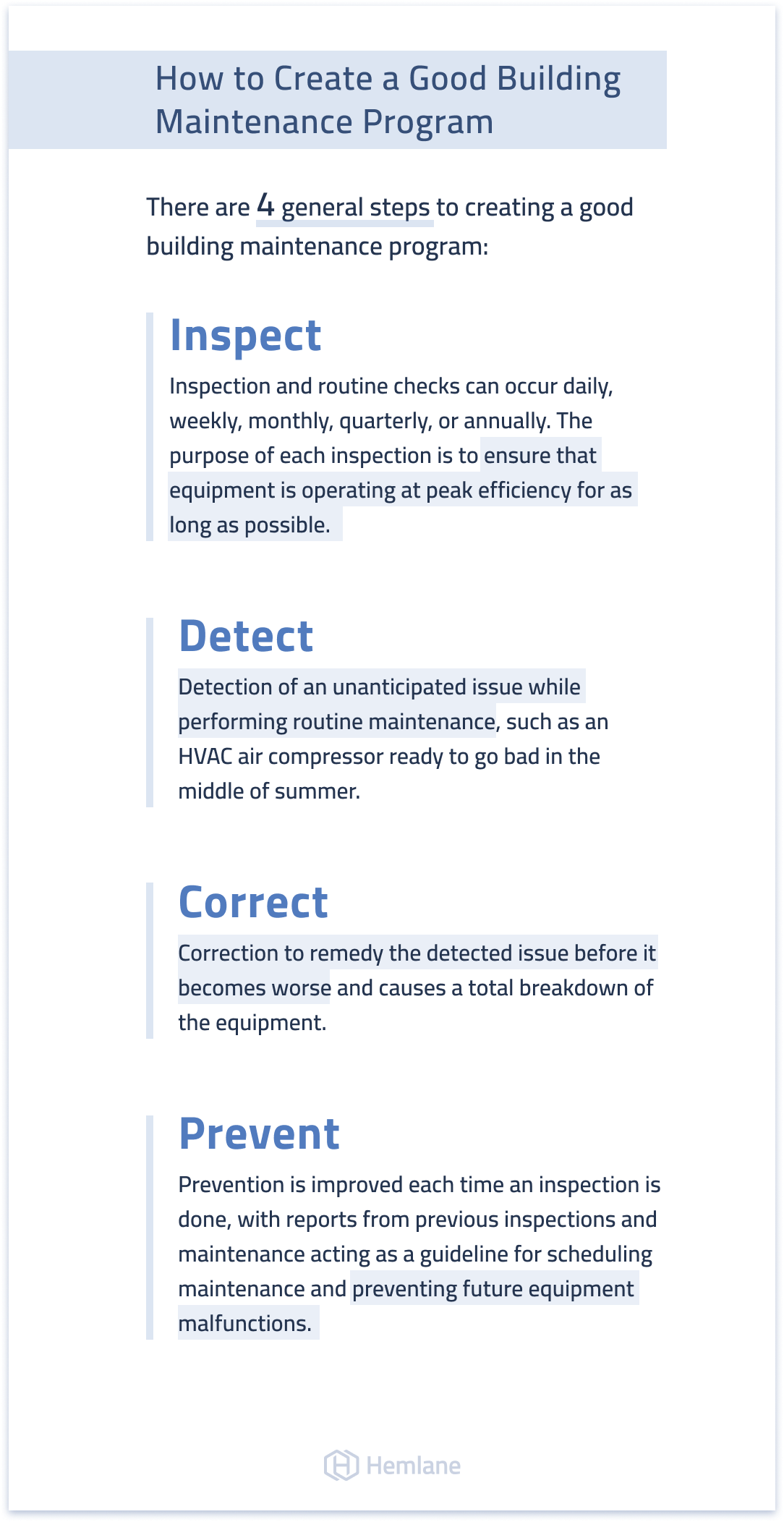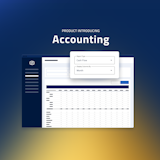The Only Building Maintenance Checklist You’ll Ever Need [+ download]
Deferred maintenance is the death of any property management or real estate investment business. Buildings that aren’t maintained properly lead to costly repairs, lost rental income from frustrated tenants and vacancy, and a general decline in asset value.
While building maintenance takes a lot of time and effort, a good building maintenance checklist is worth its weight in gold. This is particularly true for remote real estate investors who need to keep a close eye on their properties from a distance.
Today we are going to give you the only building maintenance checklist you’ll ever need, one that you can download, save as a template, and continue adding to as you build your portfolio.
What Does Building Maintenance Really Mean?
Building maintenance helps you to find and fix problems before they occur. Also called planned or routine maintenance, maintaining a building can help increase property value by taking care of the asset and tenants who are paying the rent.
For multifamily buildings in particular, deferred maintenance can lead to vacancy, which eats into your cash flow, cash on cash return, and ultimately your asset value.
Instead of reacting to repair requests, utilizing a building maintenance checklist enforces preventive building care with a pre-set inspection schedule based on factors including time of year, type of tenants, and manufacturer’s guidelines.
How to Create a Good Building Maintenance Program
There are four general steps to creating a good building maintenance program:
Inspect
Inspection and routine checks can occur daily, weekly, monthly, quarterly, or annually. The purpose of each inspection is to ensure that equipment is operating at peak efficiency for as long as possible.
Detect
Detection of an unanticipated issue while performing routine maintenance, such as an HVAC air compressor ready to go bad in the middle of summer.
Correct
Correction to remedy the detected issue before it becomes worse and causes a total breakdown of the equipment.
Prevent
Prevention is improved each time an inspection is done, with reports from previous inspections and maintenance acting as a guideline for scheduling maintenance and preventing future equipment malfunctions.

Benefits of Having a Building Maintenance Program
Although the costs of building maintenance appear on the P&L (income statement) as an expense item, savvy real estate investors understand that having a good building maintenance program also helps to grow the bottom line.
There are seven key benefits to having a regular building maintenance program:
- Equipment downtime is decreased.
- Repairs are also decreased with preventive maintenance.
- Tenants and customers have a better experience, helping to keep rent revenues up and property vacancy low.
- Property management staff can be more productive when they’re not constantly reacting to problems.
- A building maintenance checklist also leads to more efficient use of staff hours and keeps overtime expenses low.
- Building safety is improved for tenants, occupants, staff, and the general public, helping to reduce ownership liability.
- The extended life expectancy of mechanical systems reduces CapEx charges by eliminating the need for early replacement.
How to Create a Building Maintenance Checklist
A good building maintenance checklist should include the following items to ensure that asset values are being maintained and the health and safety of the building occupants and general public aren’t put at risk.
Safety
- Safety signs such as emergency exit and parking lot signs are in good condition and easily seen.
- Smoke detectors and carbon monoxide systems are functioning properly and batteries are fully charged/replaced regularly.
- Fire alarm and suppression systems are maintained to receive routine approval by the local fire inspector.
- First aid kits in public areas are fully stocked, including eye wash bottles, respirators, and disinfectants.
Lighting
- Check all interior and exterior lighting for proper installation and function, including common areas and parking lot lighting.
- Clean light fixtures of dust and debris and confirm that they light the intended areas.
- Consider replacing parking lot lights as a group to reduce the expense of one-off bulb replacement and lighting repairs. (Or purchase multiples to receive bulk discounts.)
- Investigate incentives and credits offered by the local electric utility for converting to energy-efficient lighting.
- Verify that the hardware and cabling for exterior lighting is intact, such as ground-level signage and parking lot light poles.
HVAC
- Heating and air conditioning systems should be inspected twice a year before summer and winter begin.
- Test the operation of interior and exterior units, including all safety controls.
- Clean or replace air filters as necessary depending on the level of use, usually monthly or quarterly.
- Check refrigerant levels and oil levels.
- Verify the condensate drain pan is draining as designed.
- Check piping and insulation, inspect air compression lines, and check for leaks around tubing and fittings.
- Clean the air intake and ductwork when needed, securing loose guard screens or panels, and checking flexible duct connectors.
- Inspect exhaust fans, condenser motor bearings, and all electrical connections and hardware.
Plumbing
- Plumbing systems should be inspected according to a regular schedule, such as before periods of heavy summer use or preventive maintenance prior to the start of winter.
- Inspect the interior and exterior water pipes for leaks that could contribute to excess water use and structural building damage.
- Test water heaters and boilers, along with backflow prevention systems on both residential and commercial property.
- Lubricate bearings on circulation pumps, then check the system by running control tests.
Interior
- Check the condition of paint, flooring, and light fixtures for wear and tear that could create safety hazards such as slipping or tripping.
- Examine plumbing lines for evidence of leaks that could lead to mold growth, water damage, or pest infestation.
- Verify toilets, sinks, showers, and bathtubs are in good condition and operating properly.
- Test interior fire alarm and smoke detector systems, replacing batteries as needed.
- Inspect electrical outlets and light switches for missing or damaged receptacle covers.
- Test timers and photocells and controls to ensure they are functioning correctly.
- Check door locks and window closures for proper operation, and ensure that exits are not partially blocked or obstructed.
Exterior
- Walk the exterior of the property and look for safety hazards such as exposed electrical wire or standing water caused by improper drainage or water leaks.
- Check the condition of paint and walls, look for broken windows or doors, and examine the condition of stair railings and fencing.
- Remove weeds and debris from around the building and foundation, and remove tree branches that appear ready to fall.
- Examine the condition of sidewalks, driveways, and the parking lot, including storm drains and removal of any broken glass or accumulated trash.
- Inspect the roof, clean drains and gutters and verify they are securely anchored, and test downspouts by flushing them with water.
Building Maintenance Checklist Template
Property managers and building owners can download free building maintenance checklist templates then customize each checklist template with items specific to a building or location.
Here is a free building maintenance checklist template for you to use in your real estate business.

Building Maintenance: Additional resources
Aside from the above comprehensive maintenance checklist, you may find the following resources useful.
Seasonal:
- 10 Ways to Maintain your Rental during the Spring Season
- Winter Rental Maintenance Checklist
- 8 Rental Maintenance Tips for the Autumn Season
- 7 Summer Rental Maintenance Tips
Equipment and Systems:
Additional Resources:
- Top 5 Ways To Avoid Tenant Maintenance Lawsuits
- Rental Maintenance & Repair - Who is Responsible?
- How to Prepare for the Rental Turnover
Closing Thoughts
A good building maintenance checklist will act as a guide to increase property value, keep rental income and cash flow strong, and help ensure the health and safety of a building’s occupants and the general public.
By detecting, correcting, and preventing minor problems, property owners and managers have more time to focus on improving the performance of investment real estate.




